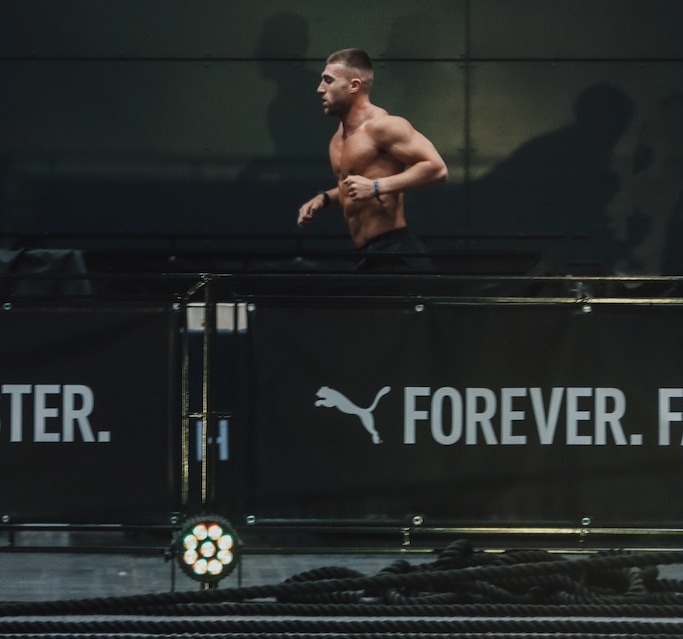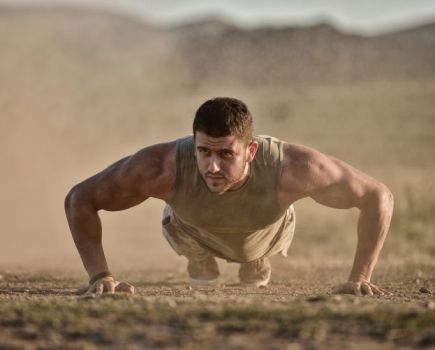Training for your first HYROX? Tackle these HYROX workouts from Master Trainer and Represent 247 athlete Jake Dearden
*Each month we will be adding a new workout to this page, so bookmark it and keep checking back to get all your HYROX conditioning from one place
But first, what is HYROX?
Billing itself ‘the World Series of Fitness’, HYROX is the new run-lift-HIIT event designed to be doable in gyms with standard equipment.
When you look at what most people get up to in the gym, it can be broken down into a simple formula: resistance exercises, sometimes combined with a bit of cardio, with a general emphasis on hypertrophy and strength endurance. That’s fine, and such a routine will definitely make you fitter, healthier and functionally stronger.
The thing is, it also means that most people are training quite specifically for something that doesn’t have a corresponding sport, which can make it quite hard to track overall progress and stay motivated.
Endurance-sport entrepreneur Christian Toetzke recognised that fact, and experimented with combining short runs, rows and SkiErgs – each around 1km in length – with high-rep functional exercises, such as farmer’s walks, sled pulls and sandbag lunges. What he landed on was a new event to test strength, stamina and mental fortitude. HYROX was born.
HYROX is a measurable, judgeable gym challenge easily turned into a competition. From the first events in 2018, HYROX now has partner gyms and operates in 24 countries.
Get to grips with the eight key exercises with our HYROX training guide.
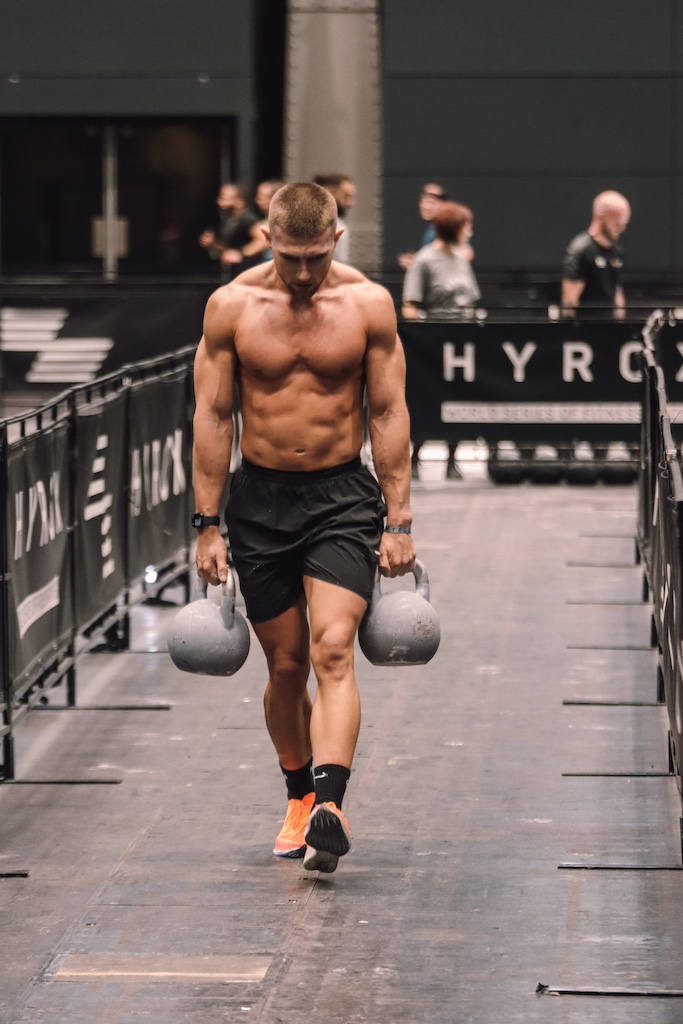
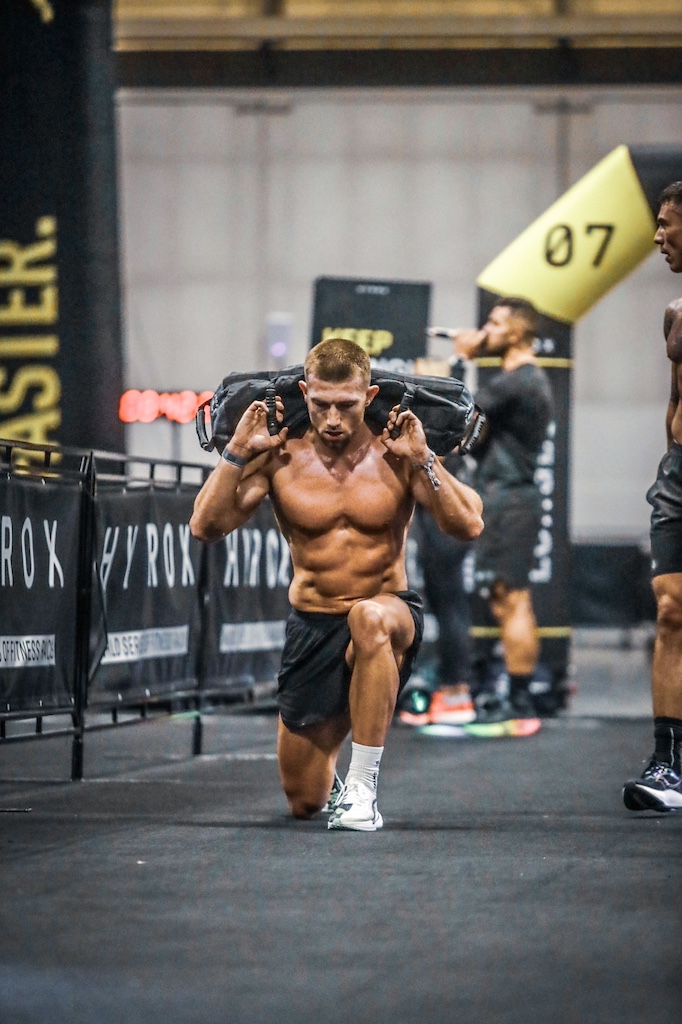
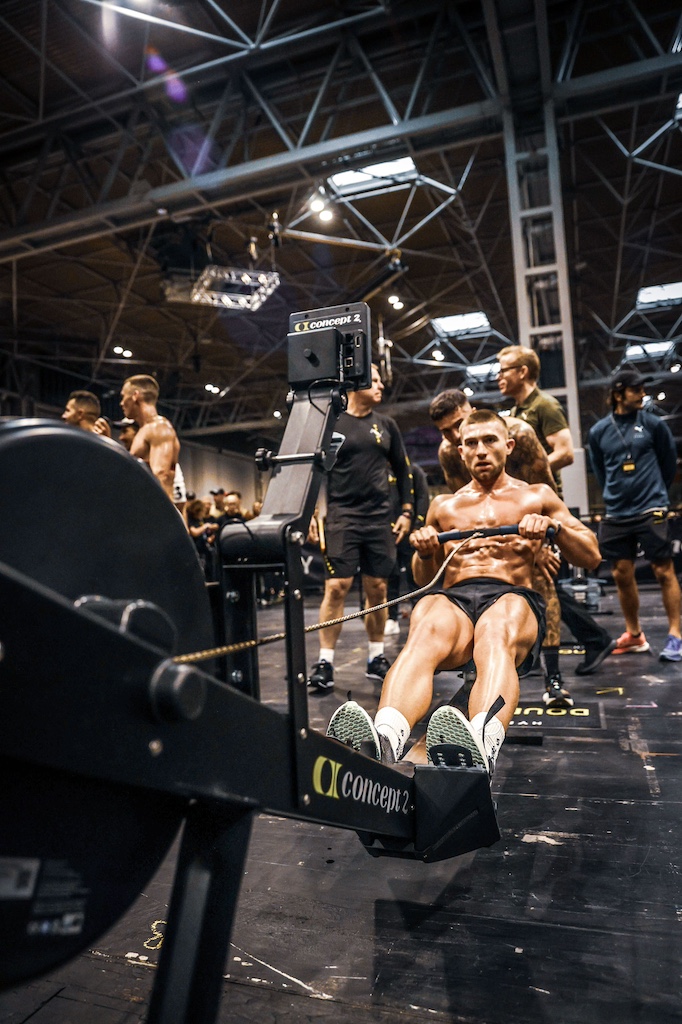

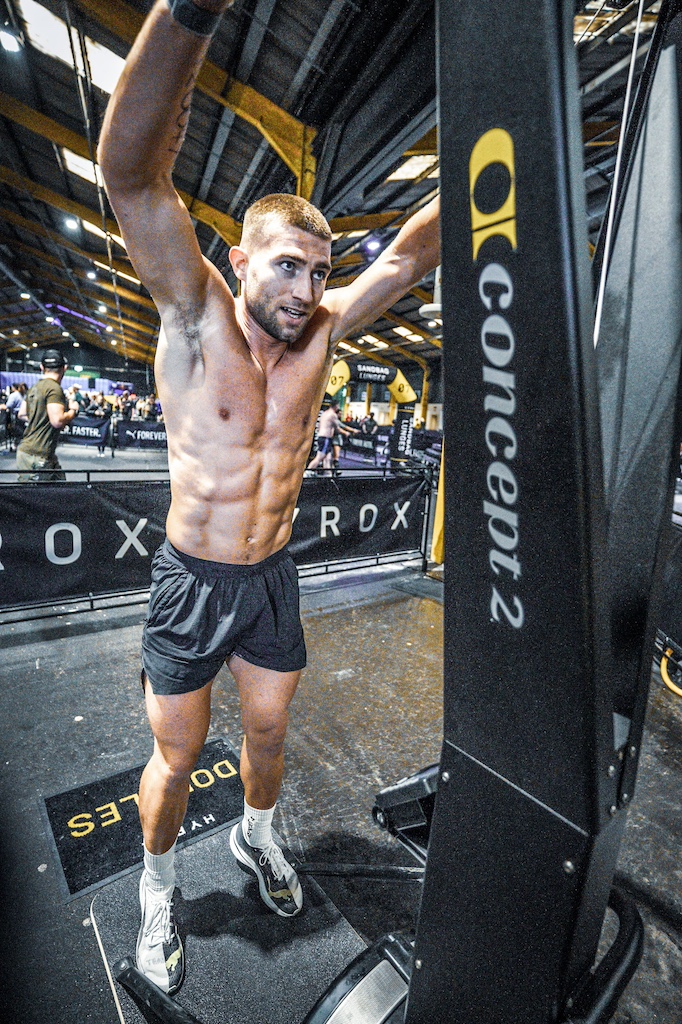
HYROX workout 1
This workout contains a mixture of different HYROX-specific movements, aiming to mirror a HYROX race but on a smaller scale. The mixture of running and functional movements prepares you for that race-day feeling, where you will inevitably be working on compromised legs. I’d recommend doing this type of simulation workout once or maximum twice a week.
Part 2 of the workout is optional, but is for anyone wanting to work on improving their cardiovascular capacity for those all-important running splits during a HYROX race. The finisher imitates the final station of HYROX: wall balls.
Part 1
- 800m run
- 50m sled push
Weight dependent on HYROX division - 800m run
- 50m sandbag lunges
Weight dependent on HYROX division - 800m run
- 500m row
- 800m run
- 50m burpee broad jumps
Part 2 (optional)
Repeat x 4:
- 800m run
- 500m row
Finisher
- 50 wall balls
Weight dependent on HYROX division
What weights to use for HYROX
| Pro Women | Pro Men | Women | Men | Mixed Doubles | Women’s Doubles | Men’s Doubles | Mixed Relay | Women’s Relay | Men’s Relay | |
| Sled push | 125kg | 175kg | 75kg | 125kg | 125kg | 75kg | 125kg | 125kg | 75kg | 125kg |
| Lunges | 20kg | 30kg | 10kg | 20kg | 20kg | 10kg | 20kg | 20kg | 10kg | 20kg |
| Wall balls | 6kg | 9kg | 4kg | 6kg | 6kg | 4kg | 6kg | 6kg | 4kg | 6kg |
HYROX tips from Master Trainer Jake Dearden
1. Don’t go out too fast
Going out too fast during the first run and ski erg. It’s common for athletes to run out with high intensity, only to face difficulties with the sleds and other stations. The initial burst of speed can lead to premature fatigue, impacting the following stations and affecting overall performance. The key here is to focus on steady and sustainable pacing, particularly in the early stages of the race. After the burpees, you can evaluate when best to start pushing yourself.
2. Time your runs
While having a steady pace on the row and ski erg is crucial, it’s important to understand that more significant time gains can be achieved during the runs, and that’s why you should focus on hitting your running splits.
3. Pace with purpose
To improve your performance, particularly on the burpees and lunges, I would aim to maintain a consistent pace throughout, hopefully lowering your heart rate to some extent, for example stepping up on the burpees rather than jumping. Most people will break the wall balls up into sets, as 100 unbroken is rough, however as it’s the last I would push through the pain – the end is in sight!
4. Use running recoveries
Your legs will recover on the run. Remind yourself that the sensation of heavy legs is only temporary and start the run with shorter, brisk strides to slowly regain your pace. Your legs should feel less heavy, and you’ll be able to actively recover throughout the run.
5. Push through the Roxzones
Within every HYROX race there is a transition zone from the running track to the exercises called the ‘Roxzone’. Most of the time you’ll see people walking in this zone. That’s a big mistake if you’re trying to get that PB. Instead, you want to be running in and out of the Roxzone to save time, but also help your body metabolise the lactate that has built up in your muscles, helping you recover faster.
How to train for HYROX
You can prepare for HYROX in almost every commercial gym, and as founder Christian Toetzke points out, you can get the training sessions done in one hour, while hitting your major energy systems and every muscle in your body. That makes it both efficient and accessible for anyone with a lot on their plate (all of us).
Consistent running (or row and SkiErg) will improve your cardiovascular fitness, and you can build muscle with HYROX, too – particularly if you adjust the workouts available online, by reducing the rep ranges. “You gain muscle but you’re not getting super bulky,” says Toetzke. “It keeps you as a very lean, well-rounded athlete.”
He says that as an 85kg, 53-year-old who used to do a lot of running and triathlon training, he gets fewer injuries and other problems with HYROX: “I feel really fit, like a 25-year old, and because I mix up my training, I never do anything that extreme anymore, which suits me really well.”
Any workout that involves running is going to torch through calories, and once you add in full-body exercises you can really keep the heart rate up, and balance the load on your muscle groups. Toetzke finds he doesn’t have to go all out in every workout, instead running at around 70 per cent through the week, then once a week doing a HYROX workout as fast as he can, in order to progress steadily.

